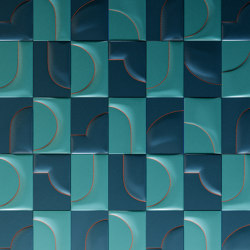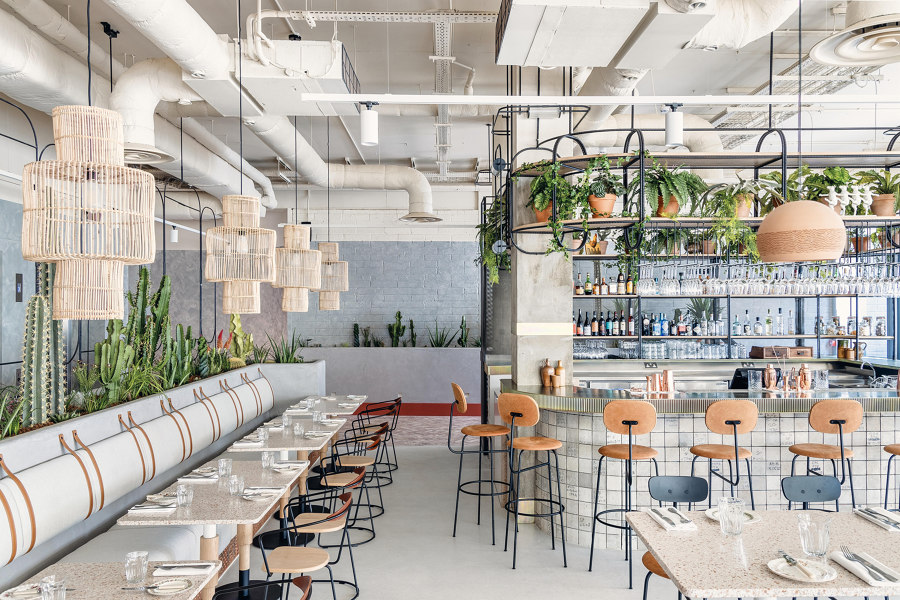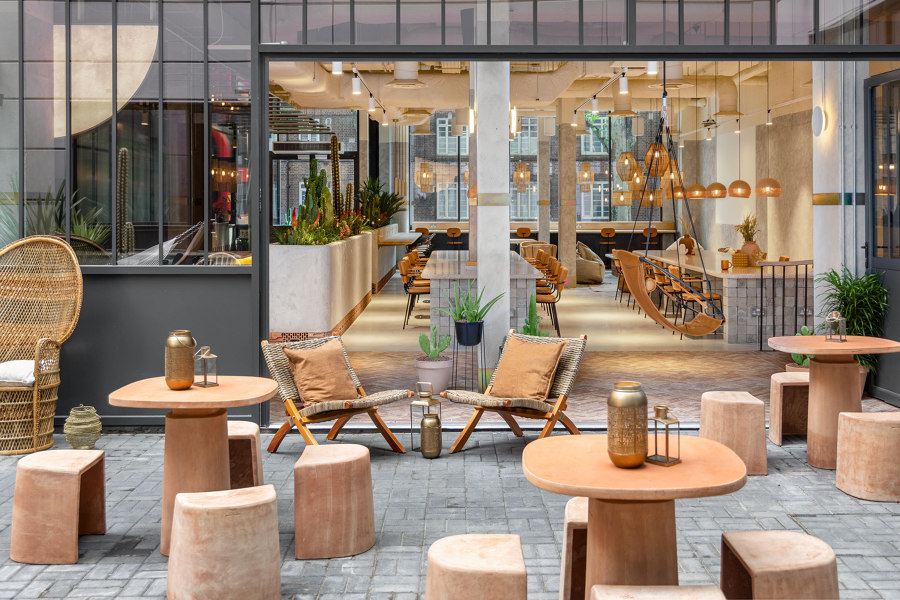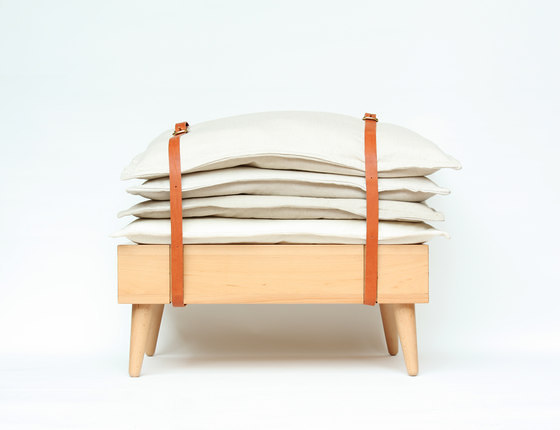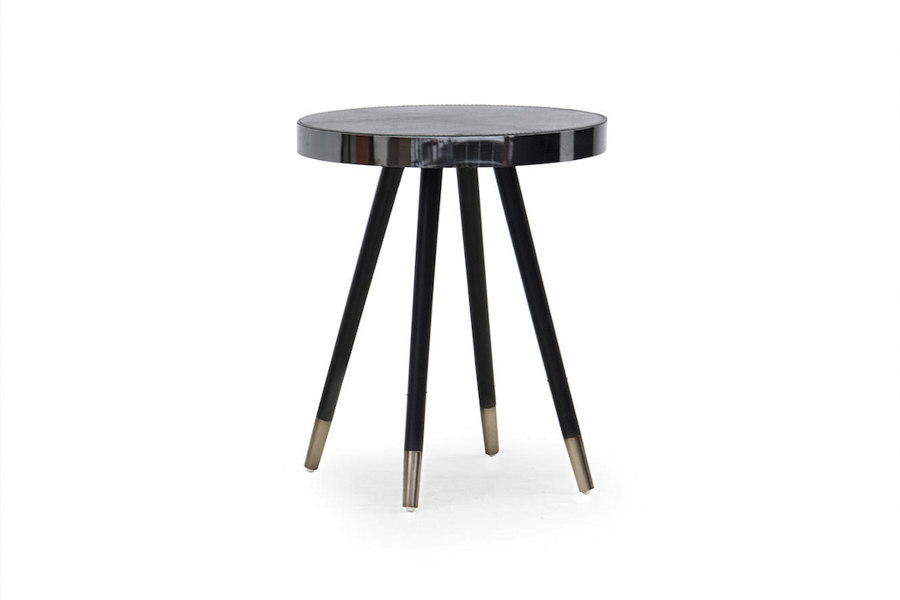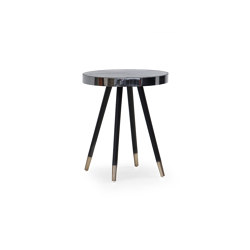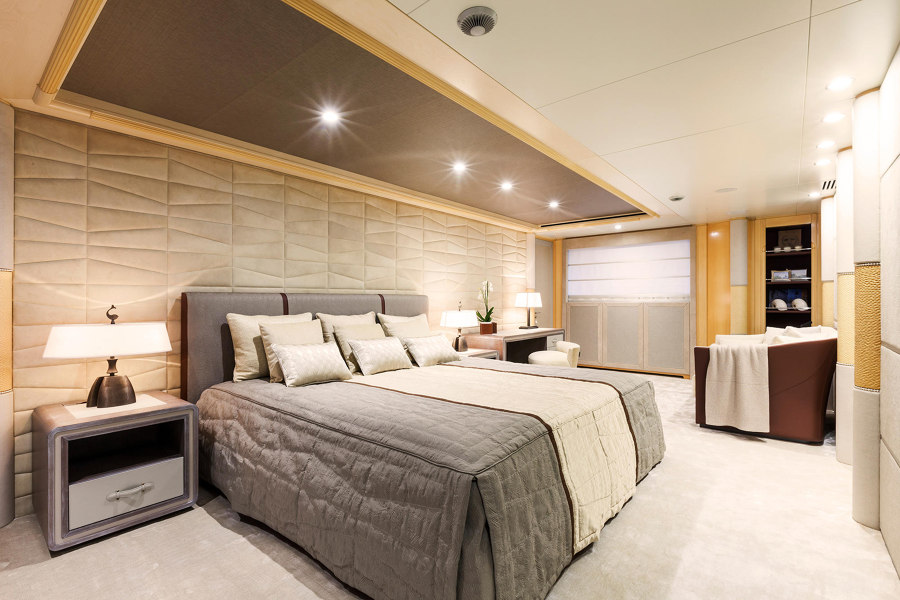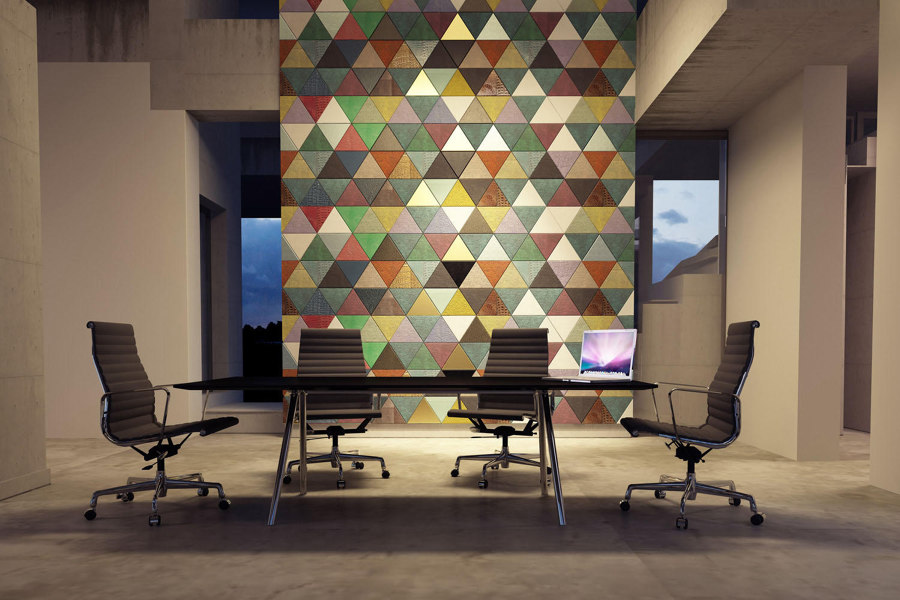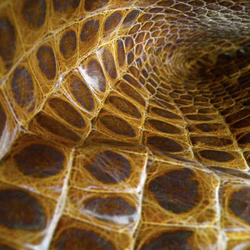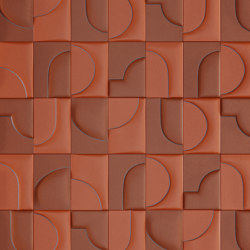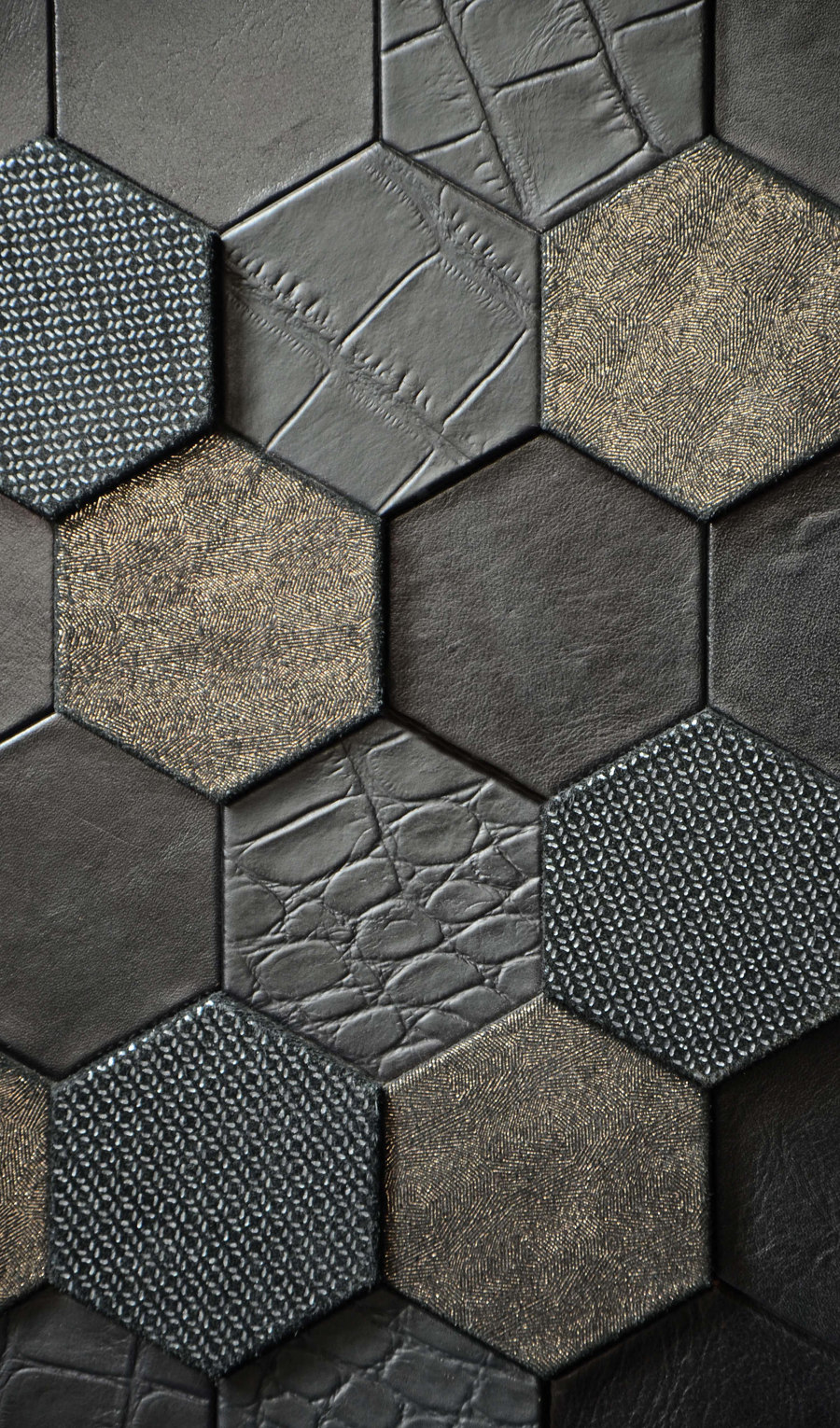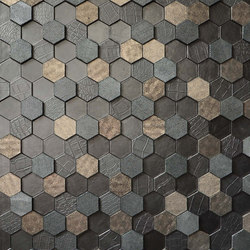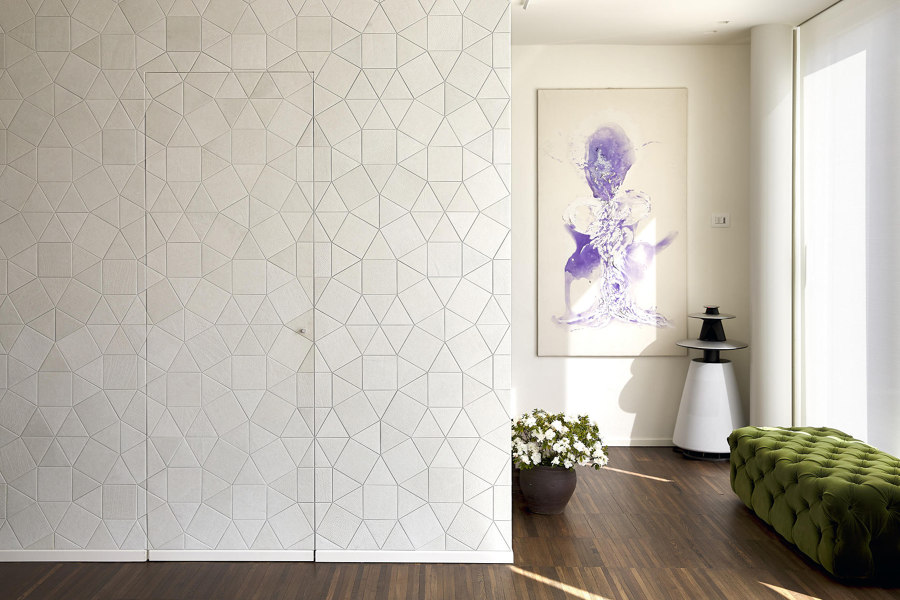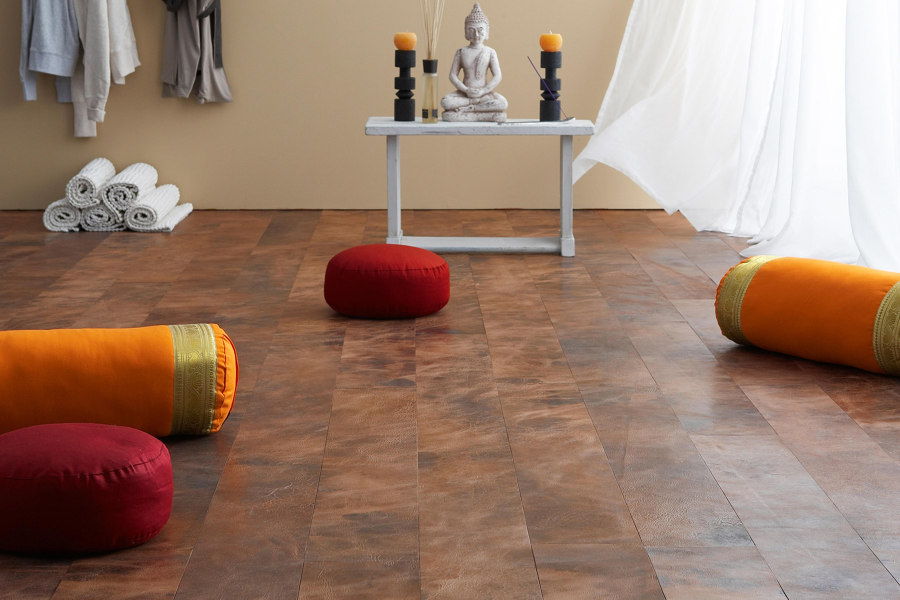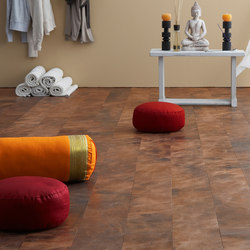How to create luxurious and tactile contemporary interiors with leather
Scritto da James Wormald
19.04.23
Natural leather has a rich history in tradition and luxury, and is ever-present in both fashion and design. But with rising questions over the environmental impact of leather, what is its future?
Studioart’s POP Leatherwall leather wall tiles combine City Atlantico and City Petrolio with contrast red stitching in a striking and quirky chessboard pattern
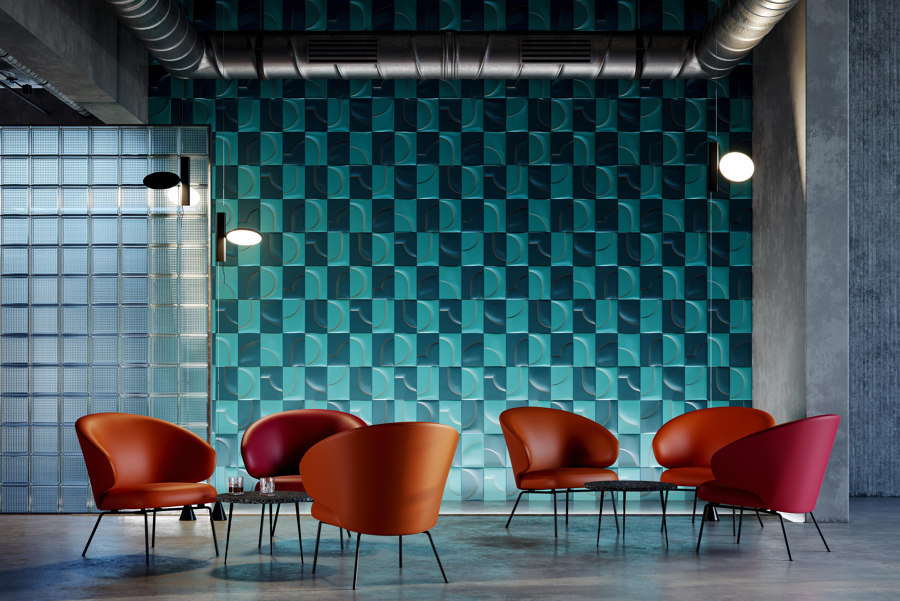
Studioart’s POP Leatherwall leather wall tiles combine City Atlantico and City Petrolio with contrast red stitching in a striking and quirky chessboard pattern
×First off, let’s address the thick-skinned elephant in the room. Leather, real animal-hide leather, is inherently harmful to the environment whichever way you skin it. Whether it’s the methane gases of the reared animals themselves or the non-biodegradable chemicals used in the tanning process. There are, however, sustainable arguments in favour of the material. Once produced, leather’s natural durability means it remains eternally circular, and using the past hundred years as an indicator, it will always be in demand.
In fact, leather manufacturers argue that as the material is simply a by-product of the meat industry, and with vegetable-tanning techniques taking over from chrome tanning, leather is now one of the greenest materials around. But with millions turning to environmental vegan diets, is the availability of luxurious real leather products set to dry up? And what is the alternative?
Leather is an outside favourite to become the next ultra-sustainable material of the future
Polyurethane leather, derisively termed ‘pleather’ fell short of the luxurious quality of ‘real’ leather, while the petroleum-based material’s environmental footprint was arguably worse than the genuine version. Vegan leathers made from fruits and vegetables are currently in development, however, that match animal leather’s quality of touch, breathability and durability, making leather an outside favourite to become the next ultra-sustainable material of the future. Whatever the actual future of leather as a material, however, these products and projects prove it will continue to add a layer of refinement to luxurious interiors for a long time to come.
The Bermonds Locke Hotel has been designed with serious ranch-style undertones, with clay bricks and cacti complementing the hospitality space’s leather-upholstered furniture. Photos: Edmund Dabney
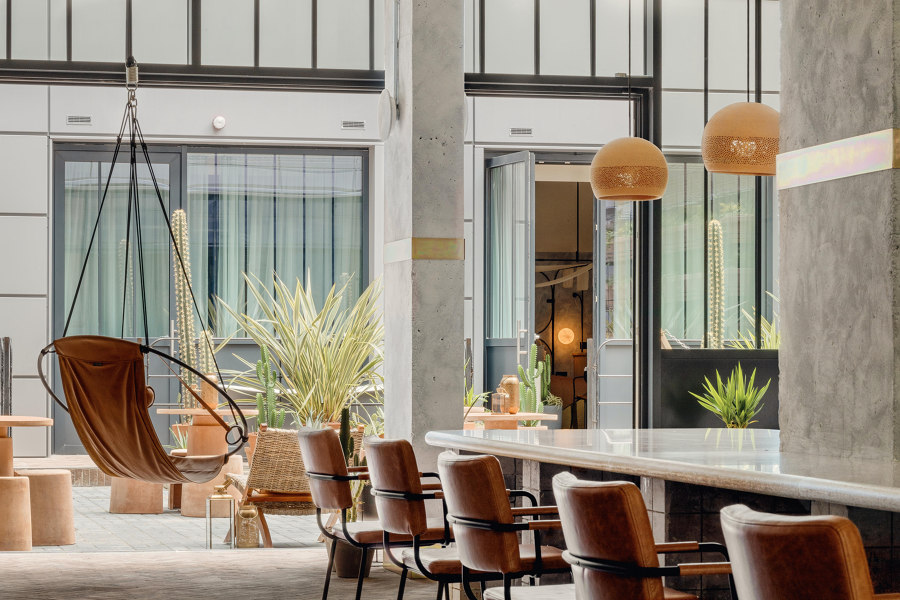
The Bermonds Locke Hotel has been designed with serious ranch-style undertones, with clay bricks and cacti complementing the hospitality space’s leather-upholstered furniture. Photos: Edmund Dabney
×Period-inspired leather interiors
Think of leather furniture and scenes of smoking rooms in gentleman’s clubs come to mind, filled with plump leather wingback chairs like this Charmy armchair from Topos Workshop. Or, perhaps a solid-wood leather-topped desk from which Vibieffe takes inspiration for its modernised Swing Desk. As the interior of the Bermonds Locke Hotel in Bermondsey, London, UK by Holloway Li shows, however, the introduction of leather furniture and accents can also bring a rustic American feel to an interior. ‘Inspired by California’s Joshua Tree and Mojave desert’ introduce the architects, the hospitality space blends clay bricks and cacti with leather upholstered seating and sofas with leather strap accents.
Micromoler’s Banquette bench (top), Formitalia’s Glam tables (middle) and Gabriel Scott’s Bardot tables (bottom) add leather accents to natural wood and luxurious black nickel and satin brass

Micromoler’s Banquette bench (top), Formitalia’s Glam tables (middle) and Gabriel Scott’s Bardot tables (bottom) add leather accents to natural wood and luxurious black nickel and satin brass
×Leather used as an accent
Even when not used as a star material, leather’s strength and natural origins make it a suitable accenting complement to wooden and metal furniture. The Diplomatic collection by Micromoler, including the Banquette bench and Kali pendant lamp, uses leather straps as simple but functional parts of their design, making them both stylish and adjustable. Formitalia’s range of Glam side tables, meanwhile, combines soft and supple leather tops inside equally luxurious dark nickel frames, while Bardot side tables from Gabriel Scott pin a cut of vegan leather to a satin brass base, with additional brass fittings.
Trapezio Leatherwall panels from Studioart on a private yacht (top) and Lapèlle Design’s colourful leather Cayman tiles with unique patterning coursing through (middle, bottom). Photos: FM Architettura (top)
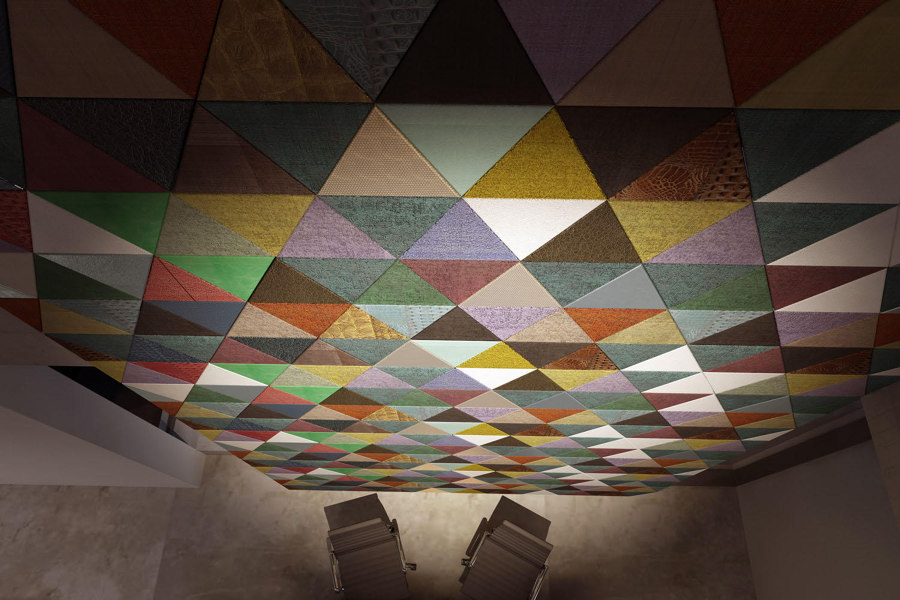
Trapezio Leatherwall panels from Studioart on a private yacht (top) and Lapèlle Design’s colourful leather Cayman tiles with unique patterning coursing through (middle, bottom). Photos: FM Architettura (top)
×Stretching leather onto surfaces
With vegan leathers like those used in the Bardot collection increasingly replacing animal leathers with little difference in quality, the luxury feel, warmth and suppleness of leather can be specified by both fashion and furniture designers guilt-free. But why stop there? Naturally acoustic, durable and with unique patterning in every square inch, leather is perfectly suited to wall coverings, too. This private yacht, for example, covers its bedroom walls with stitched Trapezio leather panels from Studioart to achieve an extra layer of elegance, while these colourful Cayman leather wall tiles from Lápelle Design each portray a unique patterning.
Studioart’s POP Leatherwall tiles (top), Pintark’s Marque Harlem hexagonal tiles at varying depths (middle) and the feature wall at Les Bains (bottom). Photos: Guillaume Grasset / Paul Raeside (bottom)

Studioart’s POP Leatherwall tiles (top), Pintark’s Marque Harlem hexagonal tiles at varying depths (middle) and the feature wall at Les Bains (bottom). Photos: Guillaume Grasset / Paul Raeside (bottom)
×Adding depth with 3D leather
By getting more creative with the stitching, Studioart’s POP Leatherwall city range animates the surface, making it jump out into a space, while Pintark’s Marque Harlem collection combines hexagonal tiles of varying depths, using a range of patterned finishes and transfers to heighten the juxtaposed look. Over in the Les Bains boutique hotel’s La Salle à Manger restaurant in Paris, France, meanwhile, interior architects RDAI added, amongst multiple feature surfaces, a rear wall that folds cuts of material in a more interactive display of blended colours as part of its ‘original, bold and experimental’ renovation, explain the architects.
Kaleido leather tiles hiding a door (top), Freund’s leather floor tiles (middle) and Simon Astridge Architecture Workshop’s leather-clad dressing room tunnel (bottom). Photos: Nicholas Worley (bottom)
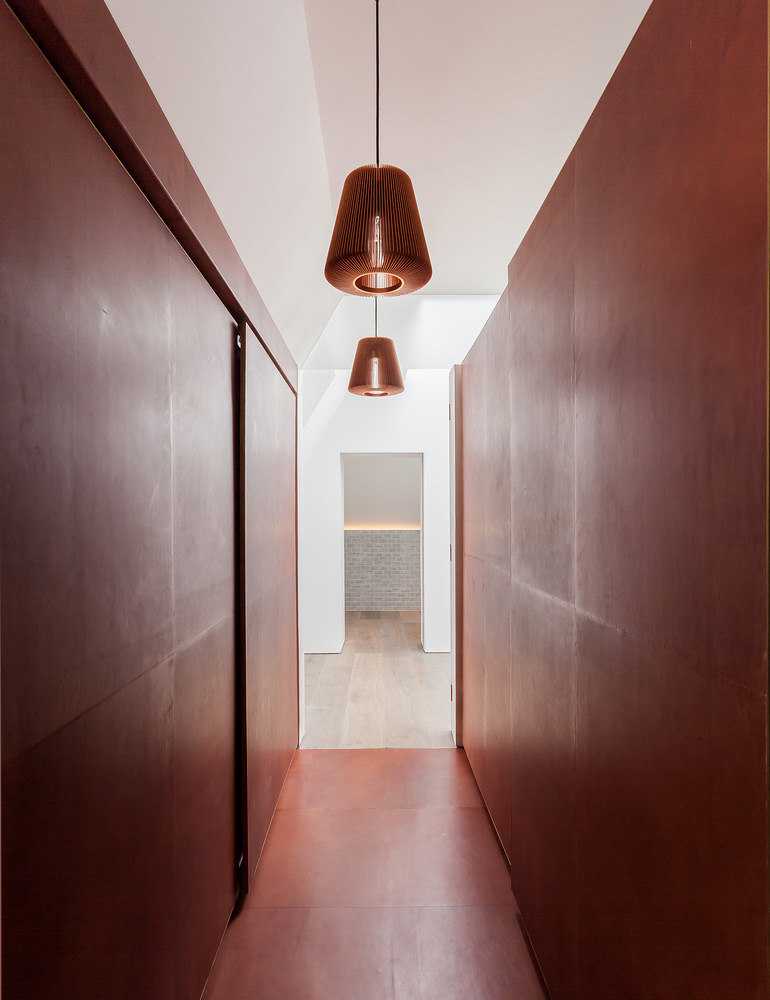
Kaleido leather tiles hiding a door (top), Freund’s leather floor tiles (middle) and Simon Astridge Architecture Workshop’s leather-clad dressing room tunnel (bottom). Photos: Nicholas Worley (bottom)
×Completing the cube with leather doors and floors
As this private residence in Montebello Vicentino, Italy shows, the warmth and comfort provided by a leather tiled wall need not be interrupted with doors, as the simple application of lightweight Kaleido Leatherwall tiles from Studioart allows for well-hidden doorways to blend in with their surroundings. Closer to the ground, meanwhile, leather flooring tiles such as these from manufacturer Freund provide a softness and gentle flexibility underfoot, and unlike carpets or thick rugs, work efficiently with underfloor heating. At this home in London, UK, for example, Simon Astridge Architecture Workshop enveloped residents with a leather-clad dressing room tunnel where ‘the best part,’ according to the architects, ‘is the lovely fresh leather smell you get every time you get dressed.’
© Architonic
Head to the Architonic Magazine for more insights on the latest products, trends and practices in architecture and design, or find inspiration in a whole world of projects from around the globe through ArchDaily’s architecture catalogue.

